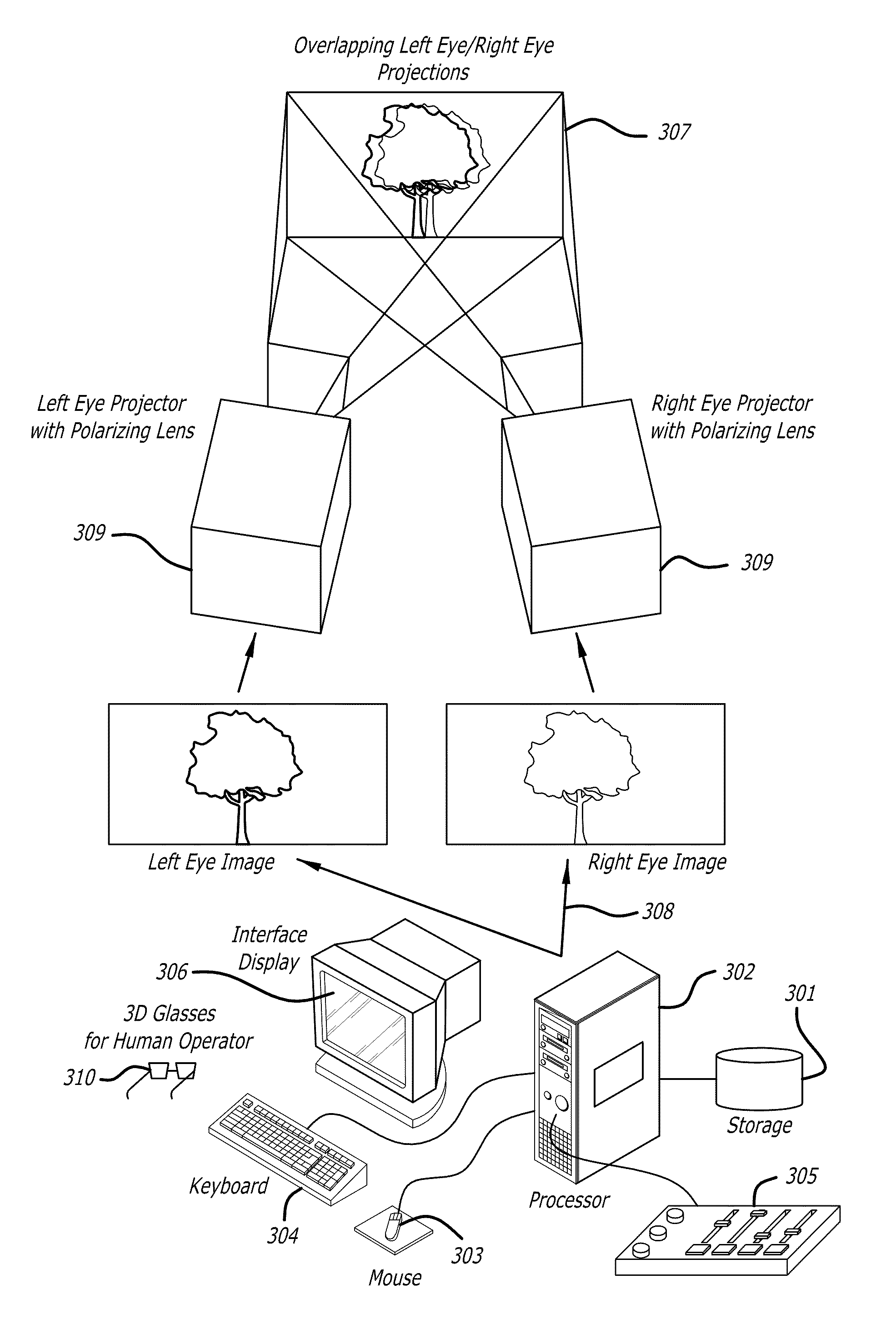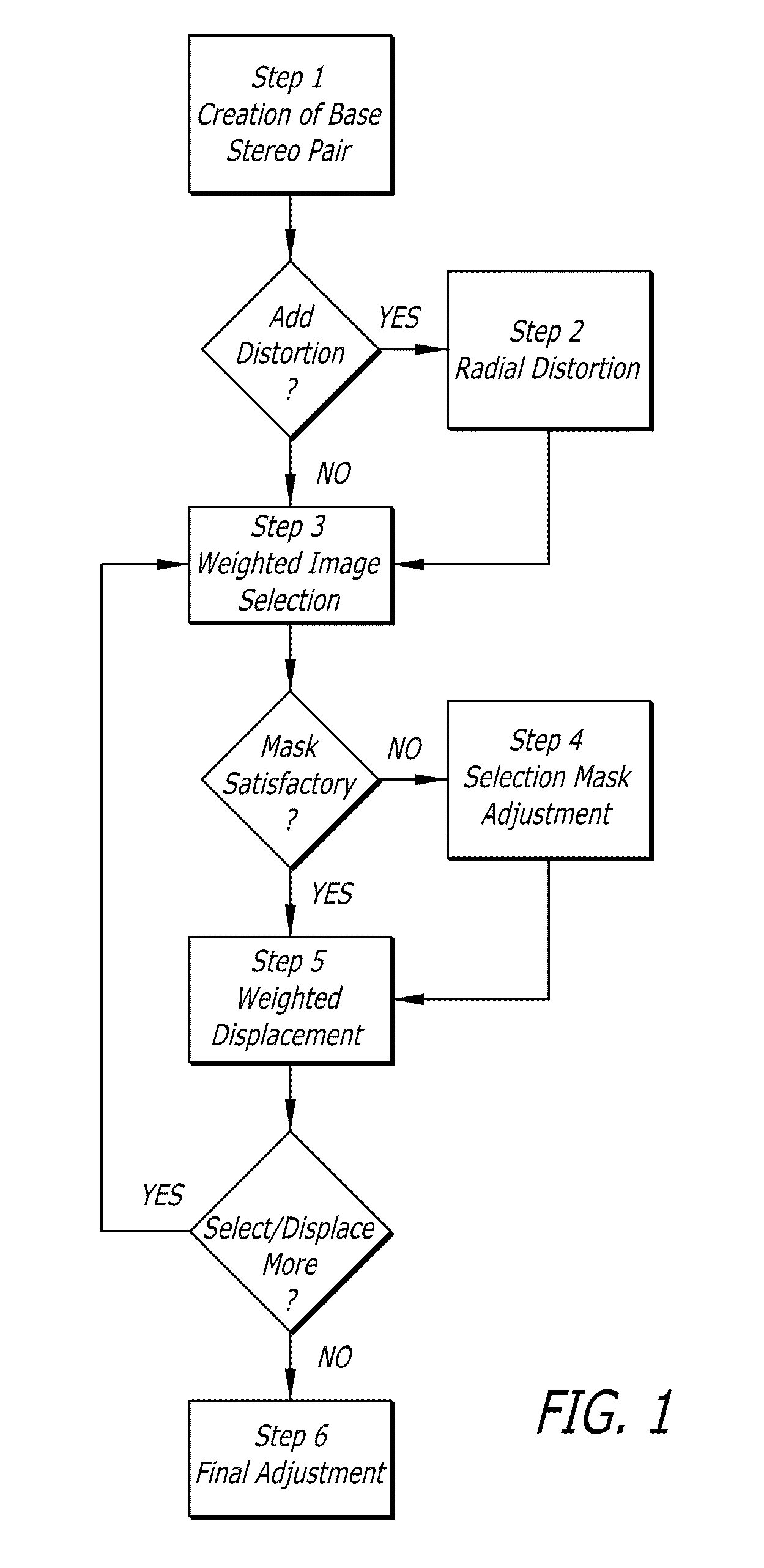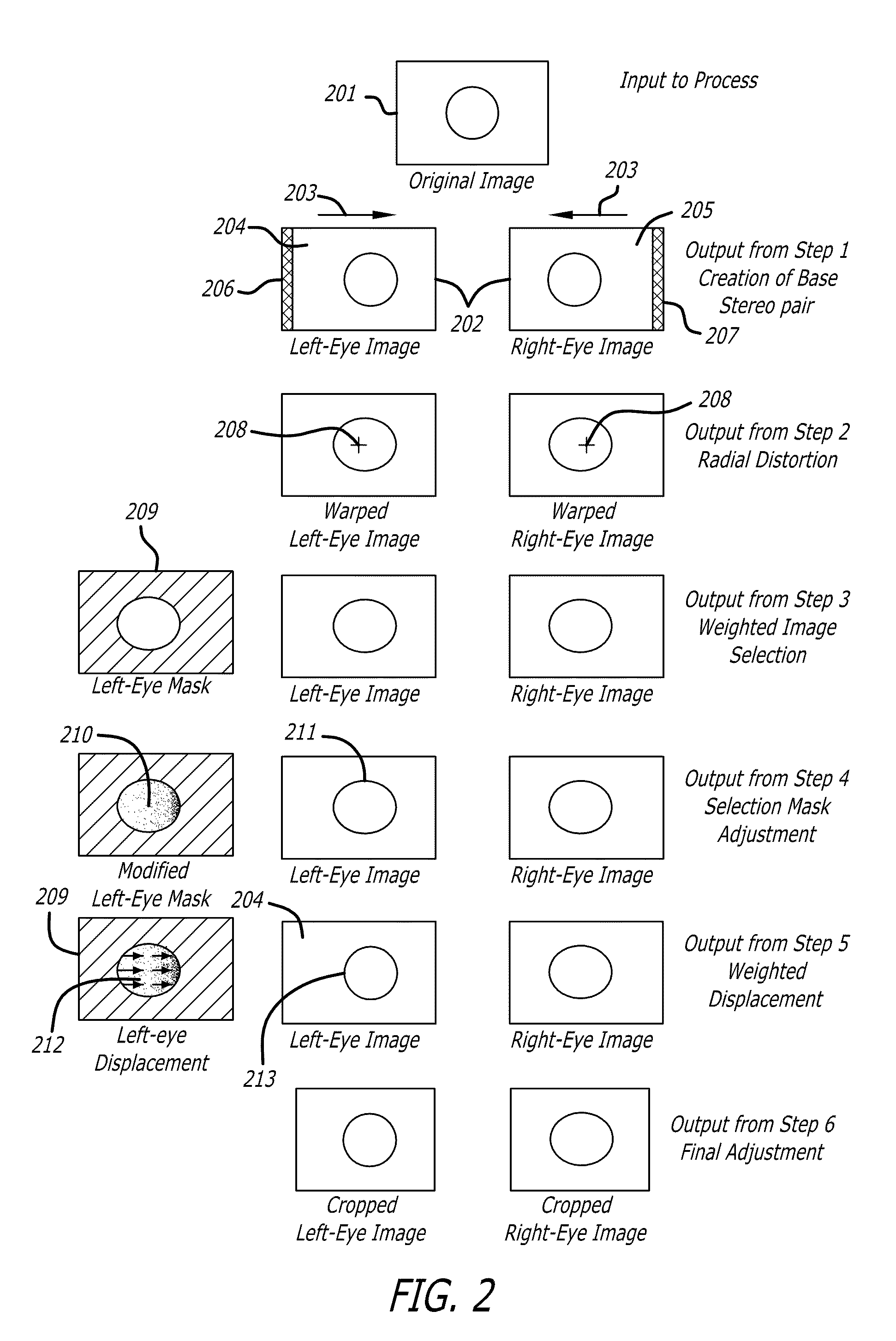System and process for transforming two-dimensional images into three-dimensional images
a two-dimensional image and process technology, applied in the field of three-dimensional film postproduction processes, can solve the problems of inducing the perception of three-dimensional depth, affecting the quality of images, so as to achieve superior and much more realistic selection and/or segmentation methods, vastly improving fidelity and detail, and improving the effect of depth
- Summary
- Abstract
- Description
- Claims
- Application Information
AI Technical Summary
Benefits of technology
Problems solved by technology
Method used
Image
Examples
Embodiment Construction
[0054]In order to describe the preferred embodiments of the present invention, a dictionary of terms is helpful to understand certain terms used. This dictionary of terms is directed to a post-production process for manipulating images, however, it is not limited to just a post-production process, but is applicable to processes for manipulating images. The terms used are defined as follows:
[0055]Animated Parameters—Parameters which change as governed by an arbitrary function over time.
[0056]Artist—A graphic artist, an editor, or a user who and / or performs the process described herein to transform a 2D image or sequence of images into a 3D image or sequence of images. The term “artist” is further defined as an operator of the system who may be taking direction from another graphic artist, client, or other person to perform the transformation process. For the purpose of this disclosure the terms “artist” and “operator” will be used interchangeably
[0057]Disparity—The difference in posi...
PUM
 Login to View More
Login to View More Abstract
Description
Claims
Application Information
 Login to View More
Login to View More - R&D
- Intellectual Property
- Life Sciences
- Materials
- Tech Scout
- Unparalleled Data Quality
- Higher Quality Content
- 60% Fewer Hallucinations
Browse by: Latest US Patents, China's latest patents, Technical Efficacy Thesaurus, Application Domain, Technology Topic, Popular Technical Reports.
© 2025 PatSnap. All rights reserved.Legal|Privacy policy|Modern Slavery Act Transparency Statement|Sitemap|About US| Contact US: help@patsnap.com



